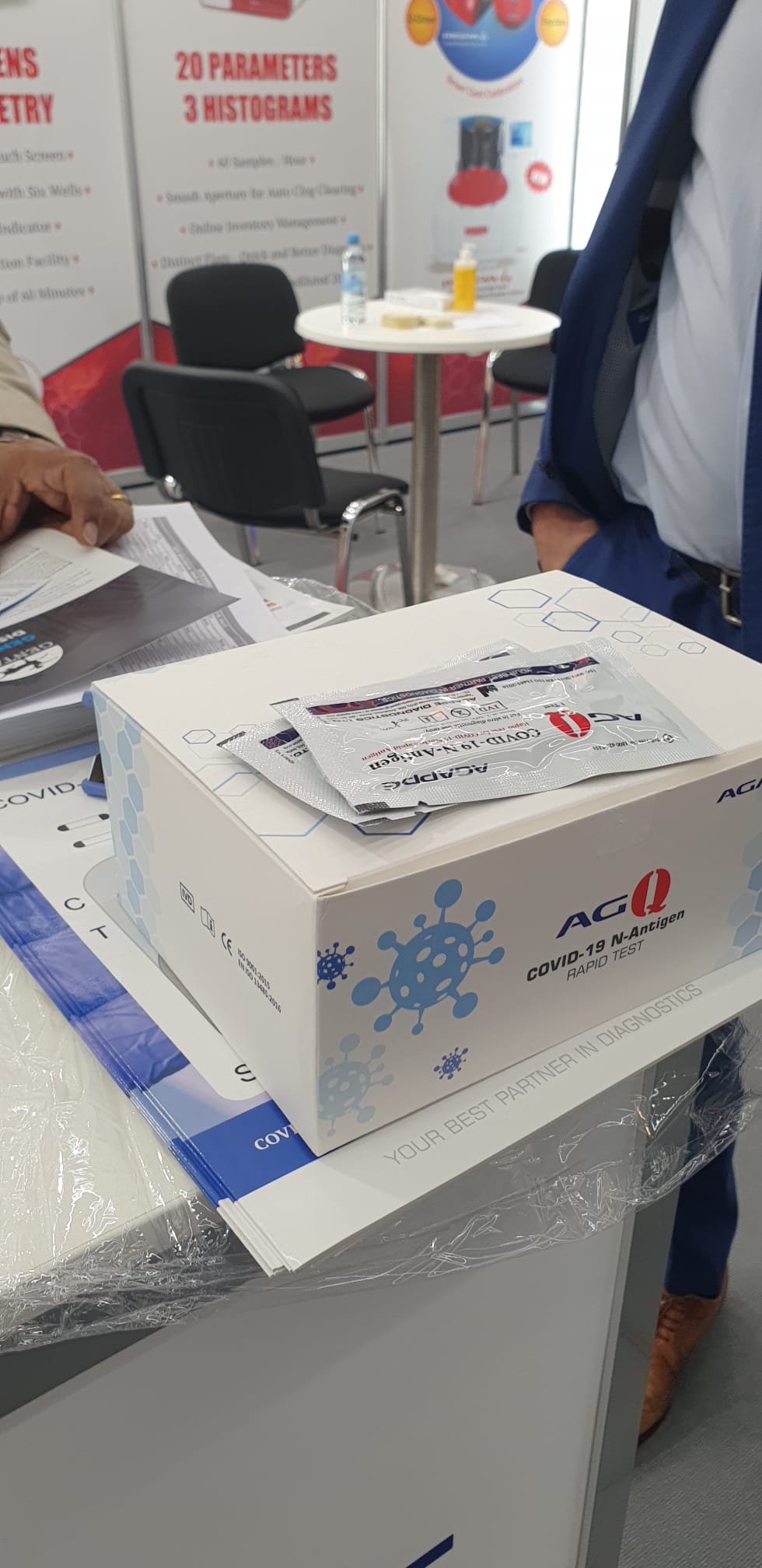Objectives:
COVID-19 emerged and rapidly spread throughout the world. Testing strategies focussing on patients with COVID-19 require assays that are high-throughput, low-risk of infection, and with small sample volumes. Antigen surveillance can be used to identify exposure to pathogens and measure acute infections.
Methods:
A total of 914 serum samples, collected from 309 currently infected COVID-19 patients, 48 recovered ones, and 410 non-COVID-19 patients, were used to measure N protein antigen levels by a chemiluminescent immunoassay. Diagnostic performances were analyzed in different periods after onset.
- Patients, samples and data collection
Consecutive patients with COVID-19 who were presented or admitted to Zhongnan Hospital, Wuhan University from January 28 to March 10, 2020, were included to test for SARS-COV-2 N-protein antigen and specific antibodies in serum. COVID-19 and recovered patients enrolled in this study were diagnosed according to the diagnostic guideline published by the National Health Commission.
Healthy volunteers and other virus-infected patients who were examined or admitted to Zhongnan Hospital, Wuhan University, from November 18, 2020, to December 6, 2020, were enrolled in the control group. Exclusion criteria for controls were as follows: (a) SARS-COV-2 RNA positive in throat swab, (b) patients with poor basic clinical data. All throat swabs and venous blood samples were collected and processed at Zhongnan Hospital of Wuhan University.
The remaining sera were collected and stored at -80°C for SARS-CoV-2 specific antibody and N-protein antigen testing. Clinical characteristics, laboratory findings, and results were collected from the medical record. electronics. The study was reviewed and approved by the Ethics Committee of Zhongnan Hospital, Wuhan University. All study targets have signed informed consent.
- Real-time RT-PCR assay for SARS-CoV-2 RNA
Throat swabs were collected from COVID-19 patients for SARS-CoV-2 RNA testing. First, total RNAs were extracted from the swab within 3 h using a respiratory sample RNA isolation kit (Zhongzhi, Wuhan, China). Briefly, 40 μL of cell lysis solution was transferred to a collection tube consisting of a swab followed by vortexing for 30 s. After incubation at room temperature for 15 min, the collection tube was centrifuged at 1000 rpm/min for 5 min.
The suspension was used as a template for amplification using real-time reverse transcriptase-polymerase chain reaction (RT-PCR) assay kits (Daan Gene, Guangzhou, China). Two target genes, SARS-CoV-2 nucleocapsid protein (N) and open reading frame 1ab (ORF1ab), were simultaneously amplified and detected during real-time RT-PCR assay. The real-time RT-PCR reaction system volume was 25 μL, including 2 μL of template, 3 μL of pure water, 17 μL of mix A, and 3 μL of mix B.
Each amplification was performed in an Eppendorf tube. by ABI prism 7500 (Thermo Fisher Scientific, Waltham, MA, USA). The reaction conditions were as follows: transcription at 50°C for 15 min and pre-denaturation at 95°C for 15 min, followed by 45 cycles of denaturation at 94°C for 15 s and extension at 55°C for 45 s. Fluorescence was collected at regular intervals during each extension phase. The lower detection limit of the real-time RT-PCR assay for two target genes was 500 copies/mL. According to the manufacturer’s recommendation, a cycle threshold value (Ct) of <40 was defined as positive.
- Chemiluminescence immunoassay to analyze SARS-CoV-2 N serum antigen
Serum SARS-CoV-2 protein N antigen was determined by double-antibody sandwich chemiluminescence immunoassay using an iFlash immunoassay analyzer (Shenzhen Yhlo Biotech Co., Ltd, Shenzhen, China). Paramagnetic carboxylated microparticles (Thermo Scientific) were coated with one of 10 candidate-specific antibodies (Shenzhen YHLO Biotech Co., Ltd, Shenzhen, China) by cross-linking N-ethyl-N’-(3-dimethyl aminopropyl)carbodiimide (Thermo Scientific) for protein N antigen-capture as described above. Another antibody was conjugated with NSP-DMAE-NHS (Maxchemtech) for antigen detection.
SARS-CoV-2 recombination nucleocapsid protein (Shenzhen YHLO Biotech) dissolved in healthy human serum was used as a calibrator. Tests can be run after calibration. In the test, paramagnetic carboxylated microparticles coated with the capture antibody bound N-protein antigens. After washing away unbound material, the antibody N-protein antigen-capture antibody compounds reacted with the acridinium-labelled antibody.
The mixture was kept in a tube under a magnetic field. And then the preactivation and activation solution were added to calculate the N-protein antigen based on the resulting relative light units (RLU) through a 2-point calibration curve.
- Statistic analysis
Statistical analyzes were performed with IBM SPSS version 23.0 software. Normal distribution continuous data were presented as mean ± standard deviation (SD) and skewed distribution continuous data were presented as median and range. The student’s t-test or non-parametric test was used for the comparison of continuous data. The chi-square test was used to analyze categorical data. Diagnostic sensitivity and specificity were calculated using the receiver operating characteristic (ROC) curve and the area under the curve (AUC). p ≤ 0.05 was considered statistically significant.
Results:
There was a high level of N protein antigen in COVID-19 patients (0.56 COI), compared to the recovered patients (0.12 COI) and controls (0.19 COI). In receiver-operating characteristic curve analysis, the area under the curve of serum N protein antigen was 0.911 in the first week after onset. In this period, the Sensitivity and specificity of serologic N protein antigen testing was 76.27 and 98.78%. Diagnosis performance of specific antibodies became better from the third week after onset. Subgroup analysis suggested that severe patients had higher levels of antigens than mild patients.
Conclusions:
A high level of serum antigen suggested early infection and serious illness. Serum N protein antigen testing by chemiluminescence immunoassay is considered a viable assay used to improve diagnostic sensitivity for current patients.
Keywords
Antigen, antigenemia, Blood, COVID-19, Diagnosis, Plasma, SARS-CoV-2, Serum

